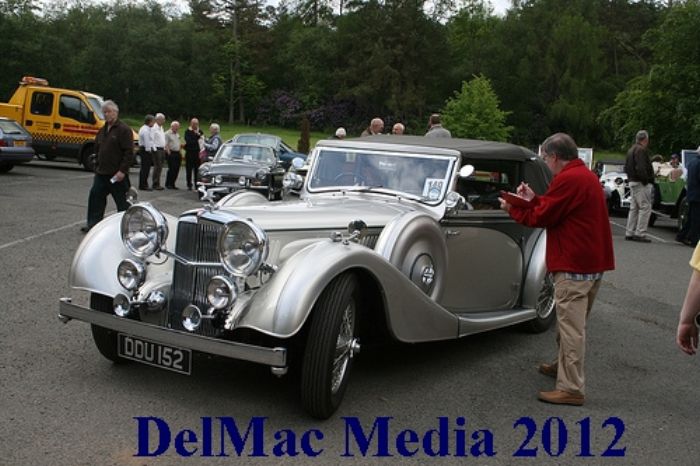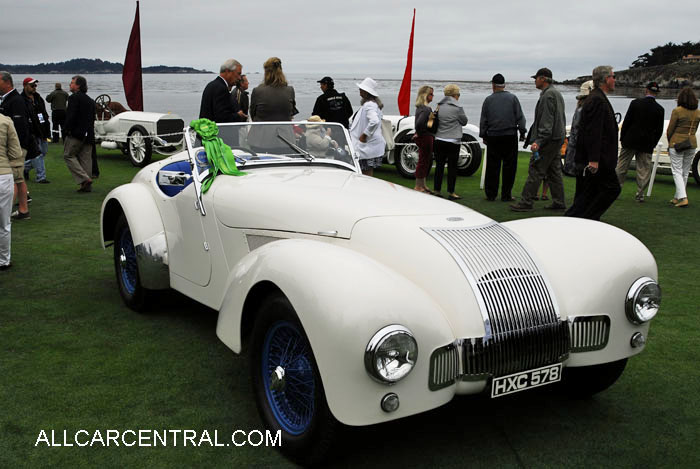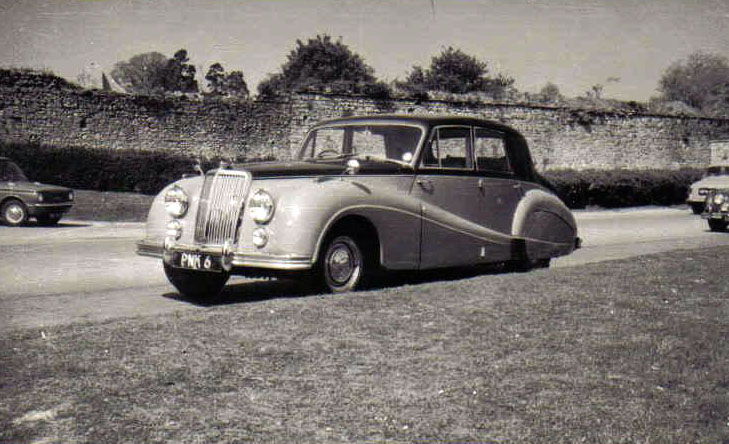British Cars Long Gone
By Geoff Wheatley
Over the years we have lost so many wonderful cars that graced our streets and highways. Cars that simply said drive me, and buy me!
As there are far too many throughout the world to remember and mourn their passing, so let me concentrate on two or three that I recall when I lived in the UK.
1937 Alvis Speed 25
Submitted by Del McDougall 2012

I will do this in alphabetical order so that no one can say that I am biased in my selection.
First on my list is the graceful ALVIS produced from 1920 through to 1967.
Throughout its total production period the company hovered between success and bankruptcy. As early as 1924 just four years after the doors opened, a receiver was appointed by a supporting bank. What is not generally known Alvis played an important role in the development of the front wheel drive in Europe.
Always adventures the company built a sprint car in 1925 with the engine mounted back to front that would drive the front wheels. In the following year, a one point five liter supercharged straight eight, grand prix car was produced that showed a clean pair of heels to many contenders on the European race circles In 1928 virtually years ahead of the competition, they produced a Front Wheel Drive production car with all round independent suspension.
The post war market tended to move away from the graceful lines of the 1930s while performance on the highway was no longer a major consideration to the average buyer as Britain's roads were becoming increasingly congested as more people purchased motor cars. In 1965 the company was taken over by Rover and within two years production ceased although, and this is an endorsement to the excellent design of these cars, military vehicles continued to be manufactured well into the 1980's. The irony of Alvis was that it could not survive for another few years when Britain developed a modern road system from north to south, east to west comparable to any auto route in Europe. It would certainly have been an ideal vehicle to use this facility with both speed and comfort.
1946 Allard J1 Competition
Whittingham-Mitchell Open Sports

The name ALARD immediately brings to mind a large car that looked as if it should be on a race track rather than the highway. Not in anyway attractive to look at unless you were/are an Alard owner, but truly a classic in its own right. Limited production commenced in 1936 with Sydney Alard winning the Monte Carlo Rally followed by the first British Hill climb Championship. The 1936 Special was based on a 1934 Ford V.8 power unit that proved to be ideal for the competitive activity that Sid Alard pursued with success. It was after the end of the war in 1945 that the company found its slot in the post war market. Not a mass market slot but a demand by the competitive few for a car that could succeed in any competitive activity. Each model and there were several produced between 1945 and 1962 utilized a Ford V8 power unit however, the J Type could be ordered with the 3917 (Four Liter to most people) Mercury V.8.
Without doubt the most successful model was the J 2 Alard, a car that could top 110 mph and a bit more if pushed! Not a car for the average owner but as mentioned before, certainly the vehicle for any competitive driver. By chance I had the experience of taking the J 2 around a motor track just a few miles north of Edinburgh, Scotland a few years ago. Yes I did push my luck on the long straights and almost hit 95 before I lost my nerve and slowed down to a modest 80 mph. Without doubt that car certainly had at least another thirty mph under the bonnet but as indicated I left it there in order to write this review and a few others.
1953 Armstrong Siddeley Sapphire
Submitted by Peter Caunt 2012

ARMSTRONG SIDDELLY is a name that is easy to remember if you are British and over sixty years of age. Produced from 1919 through to 1960. Without doubt a truly classic car from its looks to its performance. If you desired comfort but could not afford a Roller this was certainly the car for you. Elegance was its second name personified by the 1956 348 Saloon, one of the last models to leave the Coventry factory.
The Armstrong Siddeley name was created by the amalgamation of Armstrong Whitworth and Siddeley Deasy of Coventry, England, in 1920. Their desire was to produce a quality car that would appeal to the emerging Middle Class Market of Professional People who wanted to own a car with both image and quality. Remember, this was in the roaring twenties when the world economy was booming and a new generation of well heeled people had money to spend.
The first car produced by this new company was a rather large 5 liter Saloon (Sedan), due to its size, (you needed a special driver to use the car), it was not an outstanding success and the management soon changed its design model and introduced a two liter version in 1923. Followed by an even smaller version in 1928 when the World Wide Economic crisis started to take a toll on luxury spending. The company was successful in developing the pre selector gear box an idea that had been around for several years without much success until A/S came along.
aised by both the Motoring publications and new owners to such an extent that it became standard equipment from 1933 onwards. Another interesting fact that certainly contributed to vehicle development was that Armstrong Siddley was one of Britain's largest manufactures of aero engines both before and after WWII. At the same time that the war ended in 1945 the company announced two new models for the post war years, the LANCESTER FOUR DOOR SALOON AND THE HURRICANE DROPHEAD COUPE.
A not very subtle reminder that this company built these famous aircraft during the war!
In 1959 Bristol Aero Engines merged with Hawker Siddeley to form Bristol Siddeley. This spelt the end of Armstrong Siddeley as a car manufacturer and the last car left the factory in the spring of 1960. How much this was to do with the fact that Bristol went on to produce cars for a few more years is anyone's guess. They were both seeking a sales slot in the same luxury market, but that's another story for a later review.
Let me close with a personal memory of an Armstrong Siddeley. Around 1960 my father purchased a second hand A/S that was his pride and joy. It had what was then called a Fluid Clutch which in reality was a semi automatic drive unit based on the original pre-selector system. It was his custom to go out to the garage and turn on the engine to get the interior warm on a cold morning then return to the kitchen to finish his breakfast. By chance my Mother looked out of the kitchen window to see the car slowly proceeding across the manicured rear lawn on its way to the vegetable plot that was hidden behind a rose garden. The semi automatic clutch had engaged as the engine wormed up and with the grace of a ballet dancer slowly drove through the rear wall of the wooden garage and proceeded to explore the neighborhood via the vegetable plot.
In all my years I have never seen anyone move so fast that morning as the three of us rushed to the car just in time to save the roses and of course the vegetables. Strange as it may seem there was no damage to the car apart from a scratch here and there. The rear wall of the garage simply folded down almost in one piece allowing the car to simply drive over it! I think he kept the car for a number of years after this but never went through the warming process again.
© 2013 Geoff Wheatley Contributing Reporter/Writer
|


